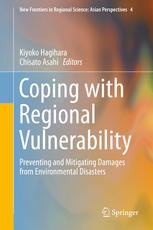

Most ebook files are in PDF format, so you can easily read them using various software such as Foxit Reader or directly on the Google Chrome browser.
Some ebook files are released by publishers in other formats such as .awz, .mobi, .epub, .fb2, etc. You may need to install specific software to read these formats on mobile/PC, such as Calibre.
Please read the tutorial at this link: https://ebookbell.com/faq
We offer FREE conversion to the popular formats you request; however, this may take some time. Therefore, right after payment, please email us, and we will try to provide the service as quickly as possible.
For some exceptional file formats or broken links (if any), please refrain from opening any disputes. Instead, email us first, and we will try to assist within a maximum of 6 hours.
EbookBell Team

5.0
28 reviewsWhether a natural event turns into a disaster depends on the severity of the hazard as well as the condition of the social sphere of its potential victims, i.e., vulnerability. We focus on regional vulnerability considering the fact that regional socioeconomic conditions determine the aspects of the damage and thus the risk management policy. This book provides the theory and methodology to understand and cope with regional vulnerability through an interdisciplinary approach. The fields mainly included in this work are welfare and environmental economics, the planning and management area of civil engineering, and risk management. In particular, we focus on hazard and vulnerability surrounding water issues and provide readers with knowledge of how the regional analysis is incorporated into the vulnerability analysis. Also considered is what risk management should be when the diversified regional background of the vulnerability is taken into account. A feature of this book is that it provides contrastive regional coverage: the vulnerability of a developed country—urban and regional areas of Japan—and that of a developing country, Bangladesh. The contents consist of three parts: (1) Socioeconomic Vulnerability in a Regional Perspective, (2) Evaluation of Regional Vulnerability, and (3) Coping with Regional Vulnerability. This book is highly recommended to researchers who need an up-to-date and interdisciplinary approach to deal with risk management where regional vulnerability plays an important role.